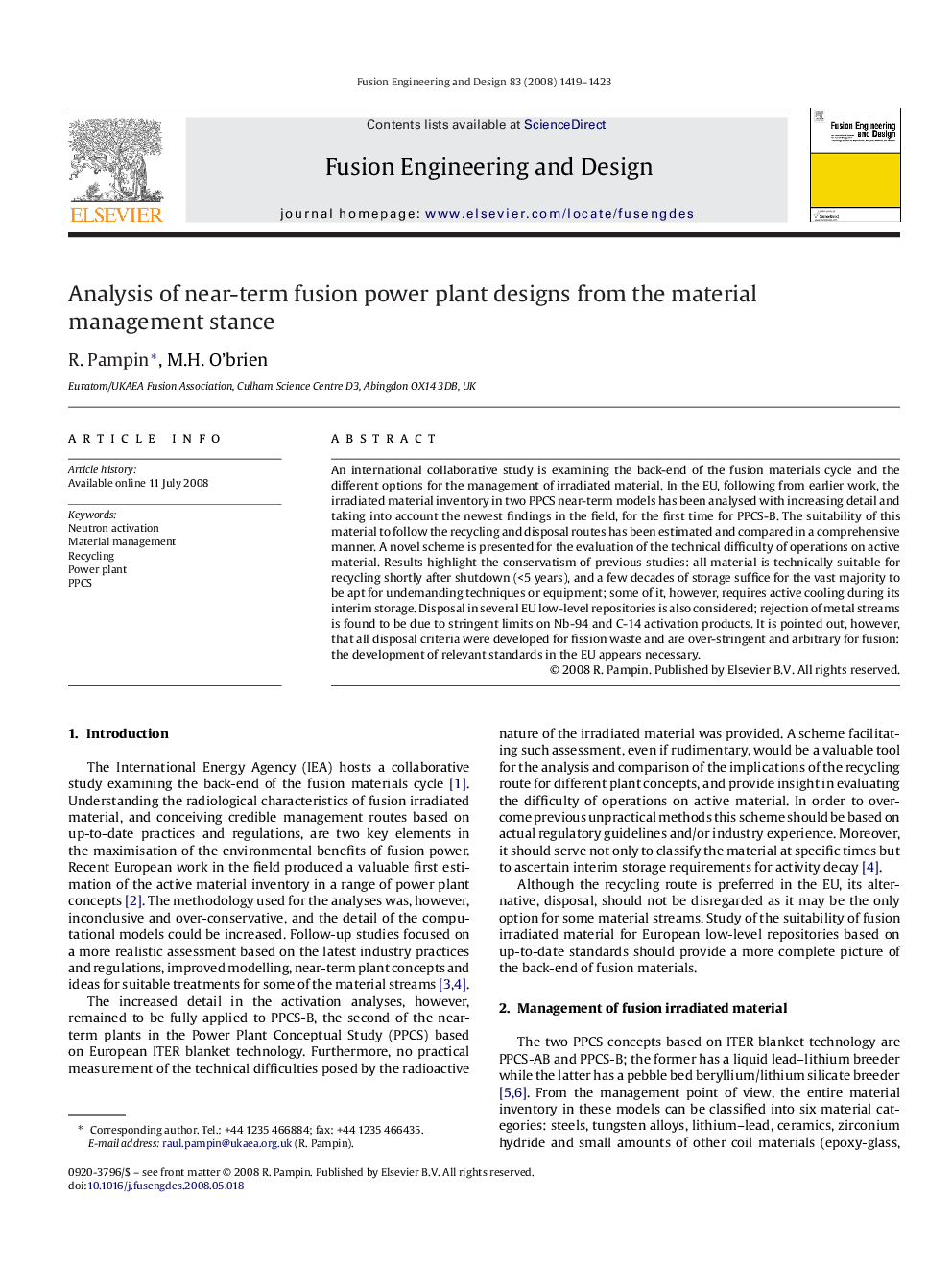| Article ID | Journal | Published Year | Pages | File Type |
|---|---|---|---|---|
| 272730 | Fusion Engineering and Design | 2008 | 5 Pages |
An international collaborative study is examining the back-end of the fusion materials cycle and the different options for the management of irradiated material. In the EU, following from earlier work, the irradiated material inventory in two PPCS near-term models has been analysed with increasing detail and taking into account the newest findings in the field, for the first time for PPCS-B. The suitability of this material to follow the recycling and disposal routes has been estimated and compared in a comprehensive manner. A novel scheme is presented for the evaluation of the technical difficulty of operations on active material. Results highlight the conservatism of previous studies: all material is technically suitable for recycling shortly after shutdown (<5 years), and a few decades of storage suffice for the vast majority to be apt for undemanding techniques or equipment; some of it, however, requires active cooling during its interim storage. Disposal in several EU low-level repositories is also considered; rejection of metal streams is found to be due to stringent limits on Nb-94 and C-14 activation products. It is pointed out, however, that all disposal criteria were developed for fission waste and are over-stringent and arbitrary for fusion: the development of relevant standards in the EU appears necessary.
